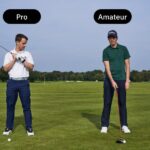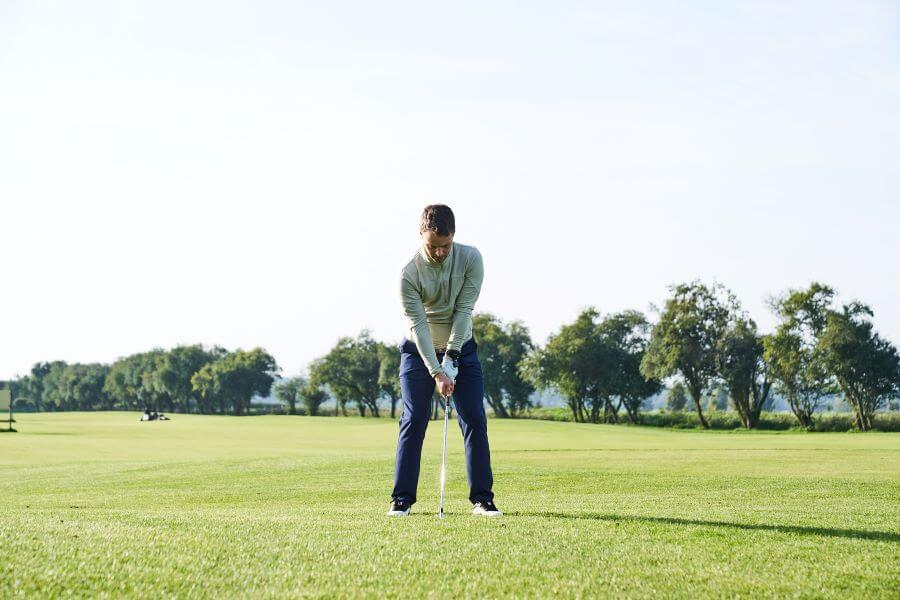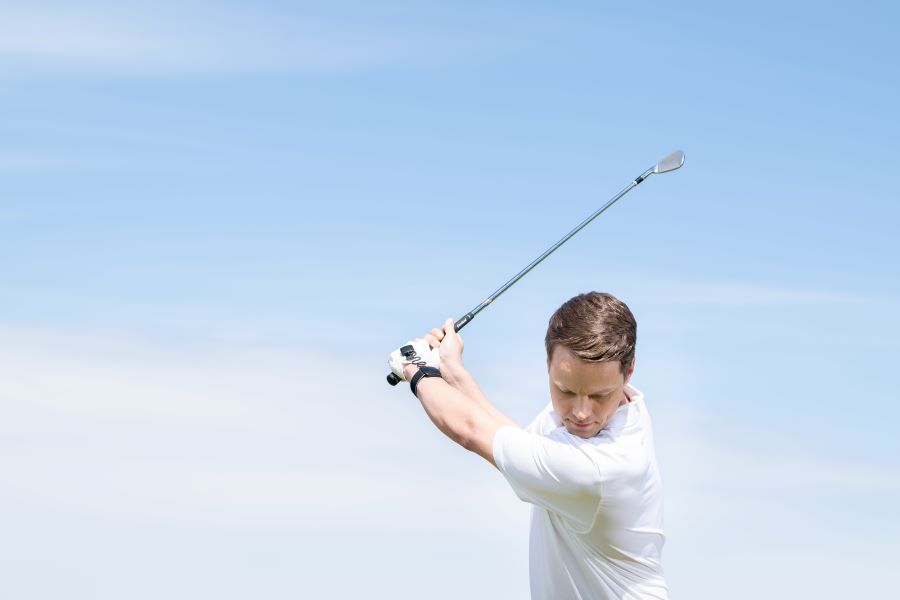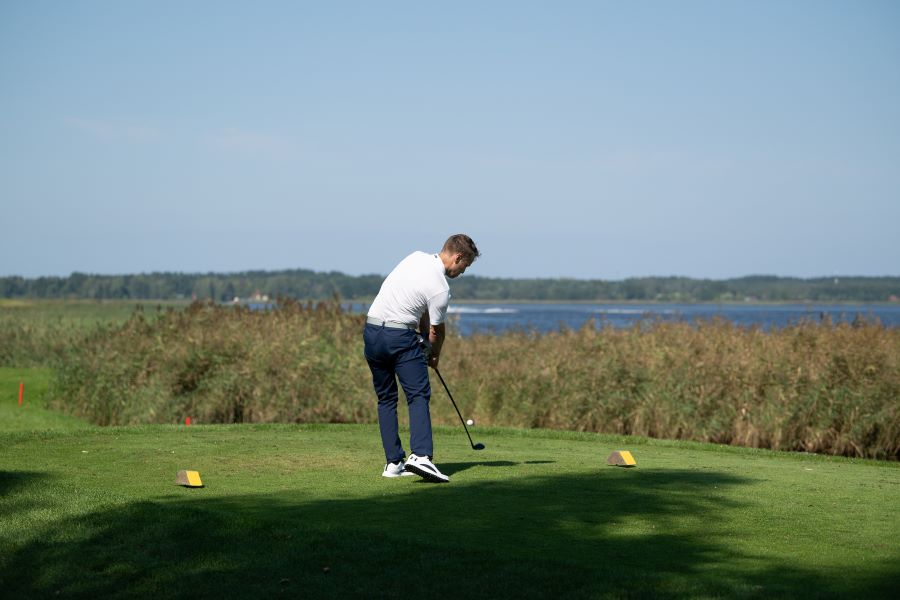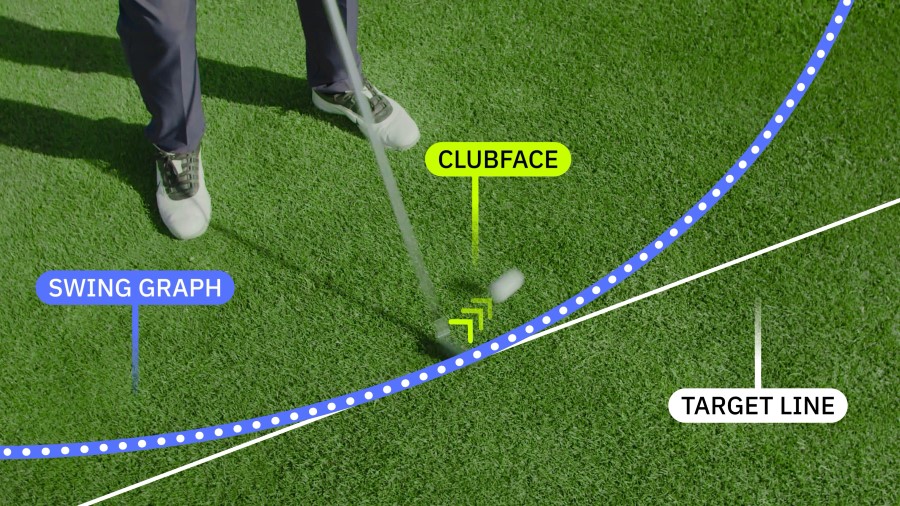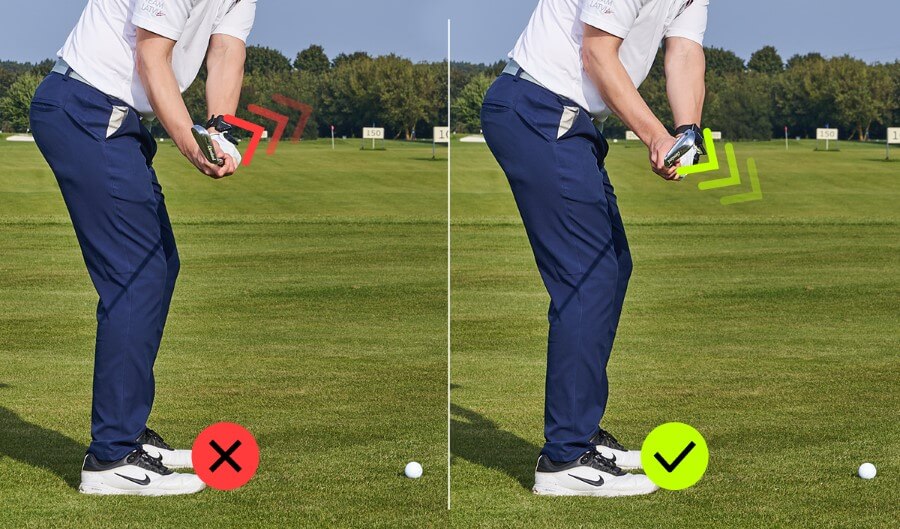The Lead Wrist in the Golf Swing (Your Left Wrist is the Secret to Consistency)
The lead wrist in the golf swing plays one of the most important roles in being a consistent ball striker.
As we know, our hands are our only connection to the club. The lead wrist dictates the clubface’s position from the address to the finish.
This guide will show you precisely what your wrist should look like and provide ways to work on improving this position.
Lead Wrist in the Golf Swing (Key Takeaways)
- A flat lead wrist is crucial at the top of the swing and at impact for consistent ball striking.
- Understanding wrist extension, flexion, radial deviation, and ulnar deviation is key to identifying your strengths and weaknesses in wrist position.
- Professional golfers might use a bowed wrist, but a flat wrist is generally recommended for most amateur players.
- The lead wrist directly affects the clubface’s position, influencing the accuracy and quality of all golf shots, from chipping and pitching to full swing drives.
- The HackMotion wrist sensor is the only tool that helps train wrist movement, offering real-time feedback to improve your wrist action throughout the swing. It’s like having a coach with you at the driving range.
If you want a complete, in-depth guide on the lead wrist in the golf swing and the correct positions to be in, this video from Rob Cheney has you covered.
Contents
- Important Wrist Related Definitions
- What is a Flat Lead Wrist?
- What is a Bowed Lead Wrist?
- What is a Cupped Lead Wrist?
- What is the Ideal Lead Wrist Position at the Top of the Swing?
- What is the Ideal Lead Wrist Position at Impact?
- How Should the Lead Wrist Move in the Golf Swing?
- Drills & Tips to Improve Lead Wrist in Golf
- In Summary
Important Wrist Related Definitions
Let’s start with some key definitions related to your wrists and how they move.
- Wrist Extension – The movement of the back of the hand towards the top of your forearm.
- Wrist Flexion – The movement of your palm towards the underside of your forearm.
- Wrist Radial Deviation – The side movement of your wrist towards your Radius bone.
- Wrist Ulnar Deviation – The side movement of your wrist towards your Ulna bone.

What is a Flat Lead Wrist?
For right-handed golfers, the lead wrist is your left wrist, and for left-handed golfers, it is your right wrist.
This wrist position at the top of a swing looks like this:
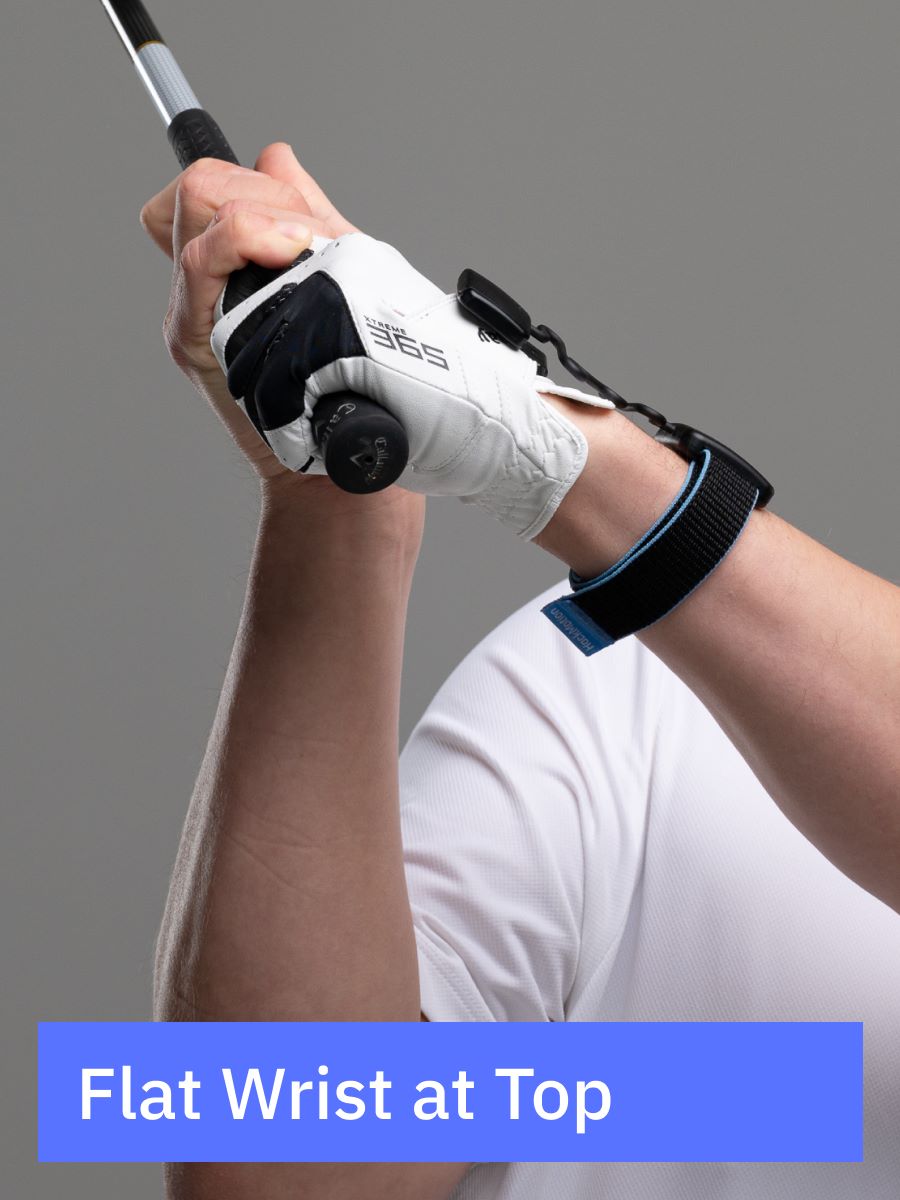
You will notice the forearm, wrist, and back of the hand are pretty much in alignment with each other. Flat lead wrist position in your golf swing, especially at the top and down through impact, is essential for accurate and consistent ball striking.
Take note that the clubface in the example above is in line with that lead wrist in its flat position. That is the goal at the top of your swing.
What is a Bowed Lead Wrist?
A bowed lead wrist is when your wrist is in flexion. This is when the palm of your lead hand is positioned down and facing the underside of your forearm.
A bowed or flexed lead wrist looks like this at the top of the swing:
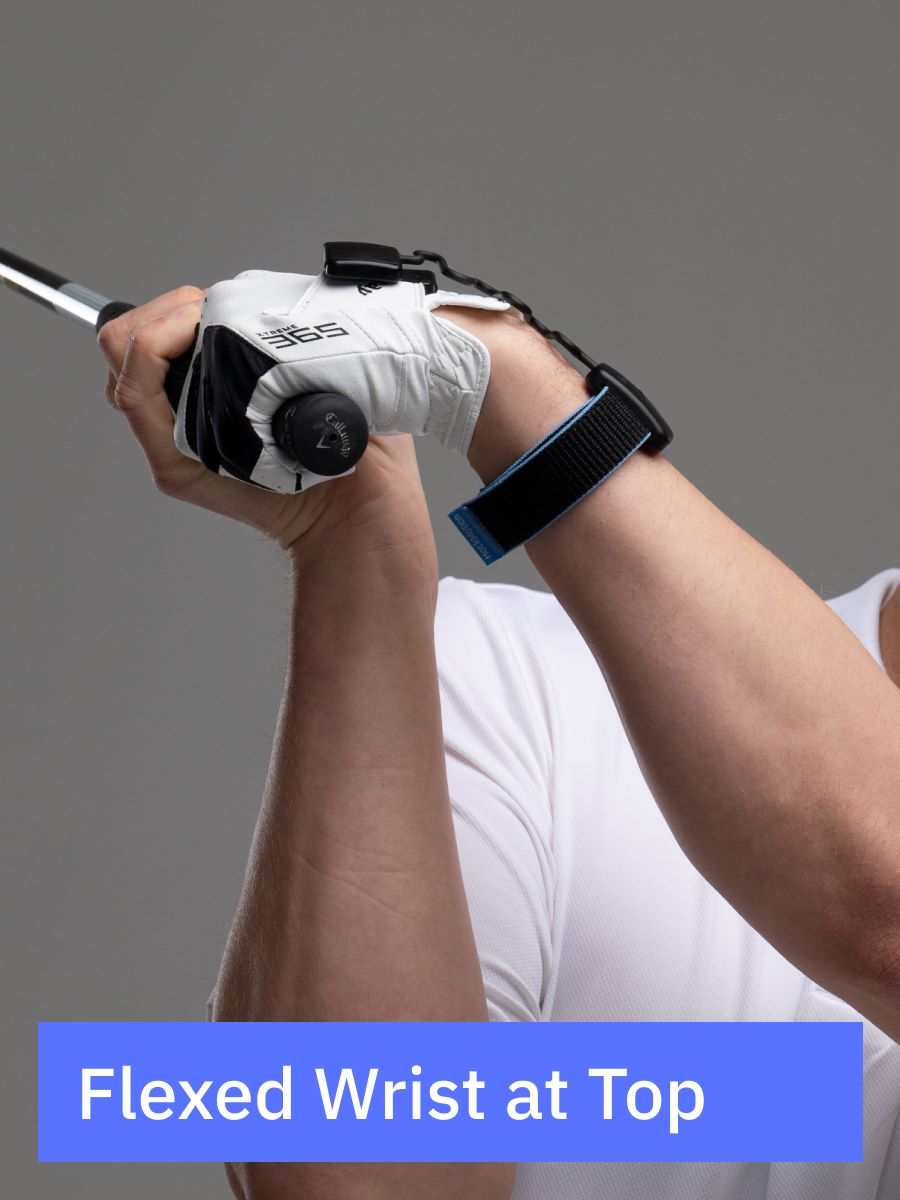
This position at the top of the swing will close the clubface.
While it is still possible to get your clubface back to square by impact if you are in this position, it takes some manipulation and good rotation of the lower body.
There are several professional golfers who have a bowed lead wrist at the top of their backswing.
They include:
- Jordan Spieth
- Jon Rahm
- Dustin Johnson
- Brooks Koepka
What is a Cupped Lead Wrist?
A cupped lead wrist is when your wrist is in extension. This is when the palm of your lead hand is positioned up and facing towards the sky.
A cupped lead wrist looks like this at the top of the swing:

This position at the top of the swing will open the clubface. It is still possible to get your clubface back to square by impact if you are in this position, but it is even more difficult to make that happen than with a bowed lead wrist.
In addition, to square the clubface, you have to slow down, losing some of your distance potential.
Very few professionals have a consistent cupped lead wrist at the top of the swing. It may happen from time to time, but as far as it is a consistent thing, as a bowed wrist is for some, it is not common.
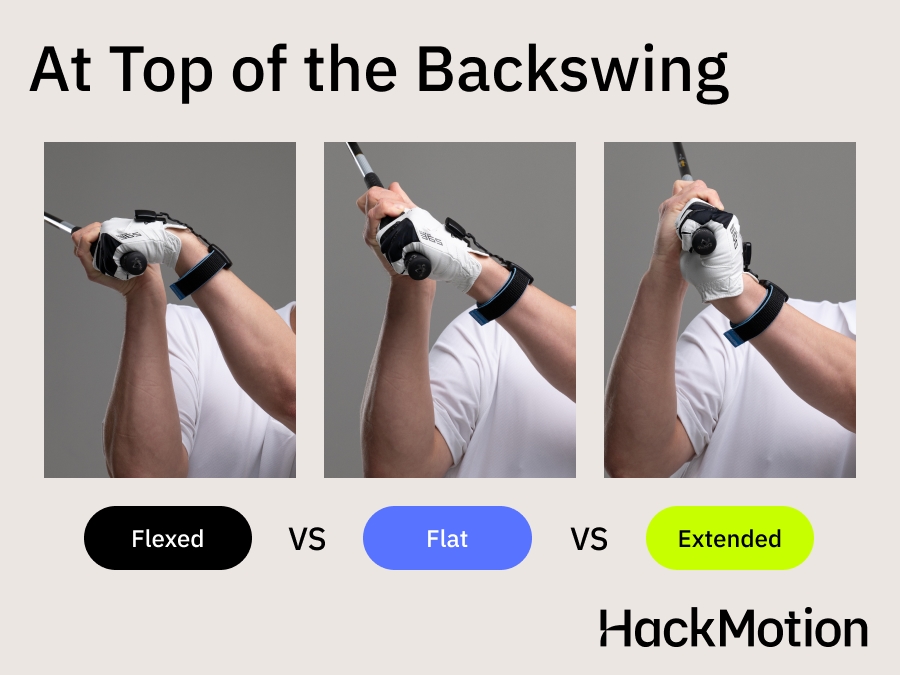
What is the Ideal Lead Wrist Position at the Top of the Swing?
The ideal lead wrist position at the top is flat. In this position, you will usually have a square clubface at the top of your swing.
This helps increase your chances of having a square clubface as you come into the ball at impact.
Other factors can indeed influence this. Your grip, whether in a strong or weak position, will play into things. The path and your body rotation will also impact your swing down and through the ball.
As mentioned previously, some excellent players, such as Jon Rahm, have a bowed lead wrist at the top.
However, in terms of your ability to square the clubface, your lead wrist being flat is the simplest method and the one that most amateurs can achieve.
What is the Ideal Lead Wrist Position at Impact?
If you want to hit straight shots, you need a flat lead wrist at impact.
The best ball strikers have the back of their lead hand at the target, the wrist flat, and a small amount of shaft lean at impact.
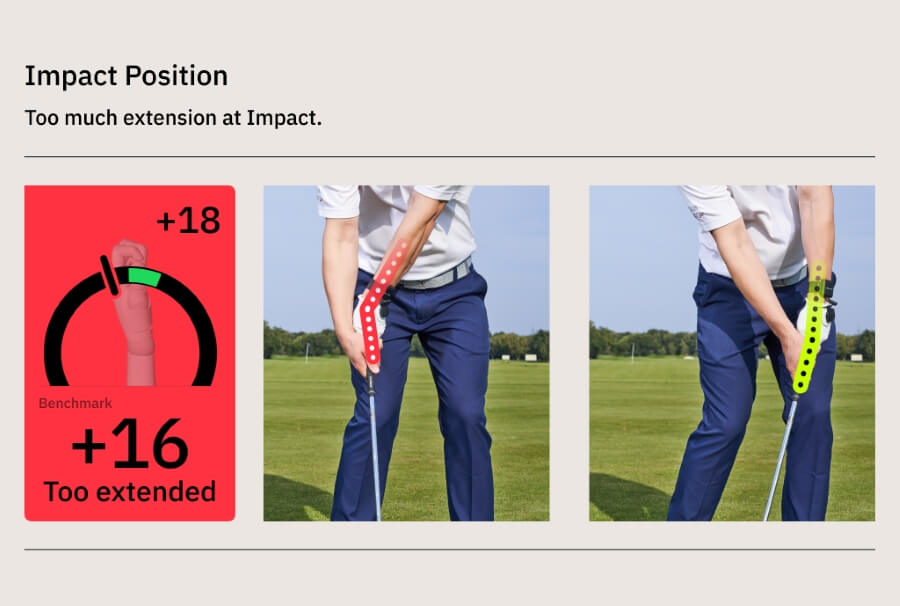
This ensures that you will have a clean strike and allow the clubs designed loft to be maximized at impact. If you are cupped at impact, you will add loft. If you are bowed at impact, you will decrease loft.
While there may indeed be situations where both would be handy (no pun intended), the best lead wrist position for standard, clean, and crisp shots requires a flat lead wrist.
How Should the Lead Wrist Move in the Golf Swing?
Once you better understand all of these positions, it’s time to start putting this information into your swing.
Although wrist angles will vary from one player to the next, we do know the patterns that the best players in the game follow with their lead wrist movement.
- Start with a neutral lead wrist at the address; some golfers have a small amount of extension at this point.
- Do not increase extension in the lead wrist as part of the backswing.
- At the top of the backswing, aim for a flat or slightly flexed lead wrist.
- Move into flexion (bowing of the lead wrist) as you begin the downswing.
- At impact, the lead wrist should be flat or slightly flexed for consistent ball contact and compression of golf shots.
- After impact the lead wrist moves into extension during the release of the club and the follow-through.
Drills & Tips to Improve Lead Wrist in Golf
One of the best ways to work on your lead wrist in golf is to do some drills. Drills can give you the real feel you need to get the club in the right position.
Here are a few drills to try:
Chipping Pendulum Drill
To hit great chip shots, your lead wrist should be flat at impact. Sometimes, practicing this miniature version of the full swing is all you need to understand what it will take in the full swing.
Grab a pitching wedge, place your feet close together, and lean a little on your left side.
Take a few swings where you keep your lead wrist flexed and make a pendulum swing or putting type stroke. This motion is the same you will want to feel on the iron shots as you get towards the approach. If your lead wrist moves toward extension instead of flexion, you’ll hit a thin shot or top the ball.
Drag the Alignment Stick Drill
There are plenty of drills you can do with an alignment stick but one of the best for wrist action is to drag the alignment stick on the ground through the impact position.
You’ll grip the alignment stick as if it’s your club and pull it. To do this properly, your lead wrist will need to be somewhat flexed through the impact position.
Impact Bag Drill
An impact bag is a great way to work on a flexed wrist position at impact. The resistance of the impact bag will keep you from flipping your wrists and moving to extension.
One of the great things about an impact bag is it gives you the feeling of a flat or flexed wrist at impact.
You can carry that feeling with you when you head back out to the course.
Backswing and Check
Now that you better understand what the lead wrist does in the golf swing. You can start doing some checks to ensure you are in the right position.
Setup as you normally do, take a backswing, and check the position of your wrist at the top. If you notice there is too much extension, you are likely adding it on the way up.
Refer back to that position of the flexed or flat lead wrist and try to get yourself in a position that matches.
How HackMotion Can Help
In addition to the drills mentioned above, HackMotion is also a solution for improving lead wrist position in the golf swing.

HackMotion measures golfers’ wrist angles, comparing them to Tour averages. It creates a 3D model of your hand, wrist, and forearm, which allows you to see what your wrist is doing throughout the swing and how that affects your clubface.
One of the most important benefits of HackMotion is that it gives you a baseline of how far off your wrist position in golf really is.
1. Identify Your Own Unique Setup
Start by determining your wrist angles at setup so you know where to start. Each player has a different way of holding the club. There are neutral, weak, and strong grips.
The grip type affects whether you should aim for a flat left wrist throughout the swing.
The lead wrist naturally tends to be more cupped (extended) for stronger grips. For weaker grips, it is more bowed (flexed). The example being discussed here is based on a neutral grip.
2. Check Wrists During Backswing
A common mistake by many golfers is increasing lead wrist cupping during the backswing and at the top.
Instead, you should gradually move towards a flatter left wrist at the top. Check your pattern and compare it to that of a professional.
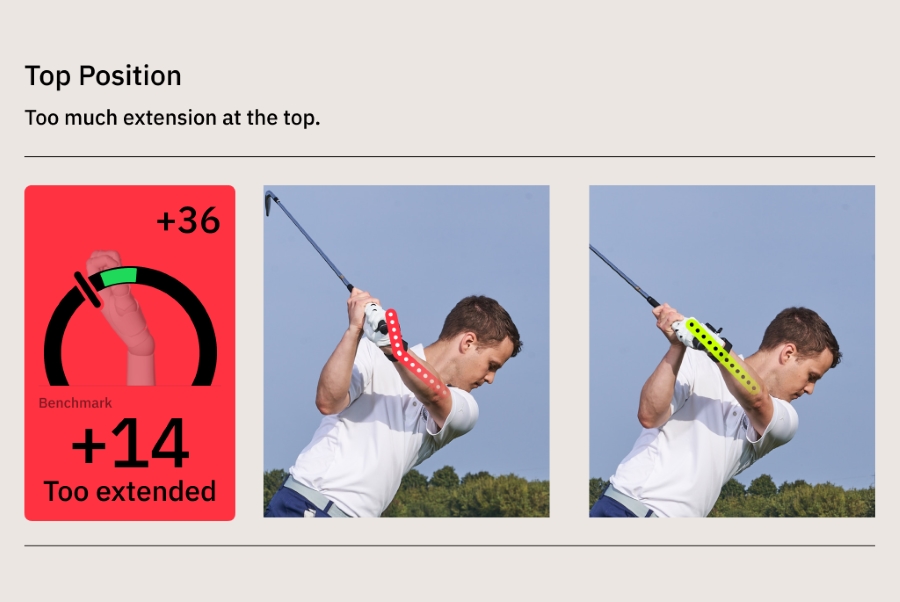
3. Keep Lead Wrist Flat in the Downswing
The downswing is crucial because it’s where you put the most power into the shaft. Your wrist movement at this point determines how the face of the club is going to be positioned.
In the early downswing, a popular mistake is pulling down the club and increasing lead wrist cupping or extension.
The correct method would be to maintain the flat left wrist you achieved at the top and even move towards flexion at impact.
4. Make it Even Flatter at Impact
The impact is where your lead wrist should be flatter than it was at the setup: more bowed than you were when starting. Use the HackMotion audio feedback mode to alert you when your wrist is becoming too extended at impact.
After completing all these steps, you can release the club into an excellent follow-through.
In Summary
Understanding the importance of the lead wrist throughout the golf swing can help you become a better player. If you get the lead wrist right, your clubface will be square, and you can hit your target.
With technology like HackMotion, we can gather data on our unique tendencies throughout our golf swing and use that information to make targeted changes and improvements.


